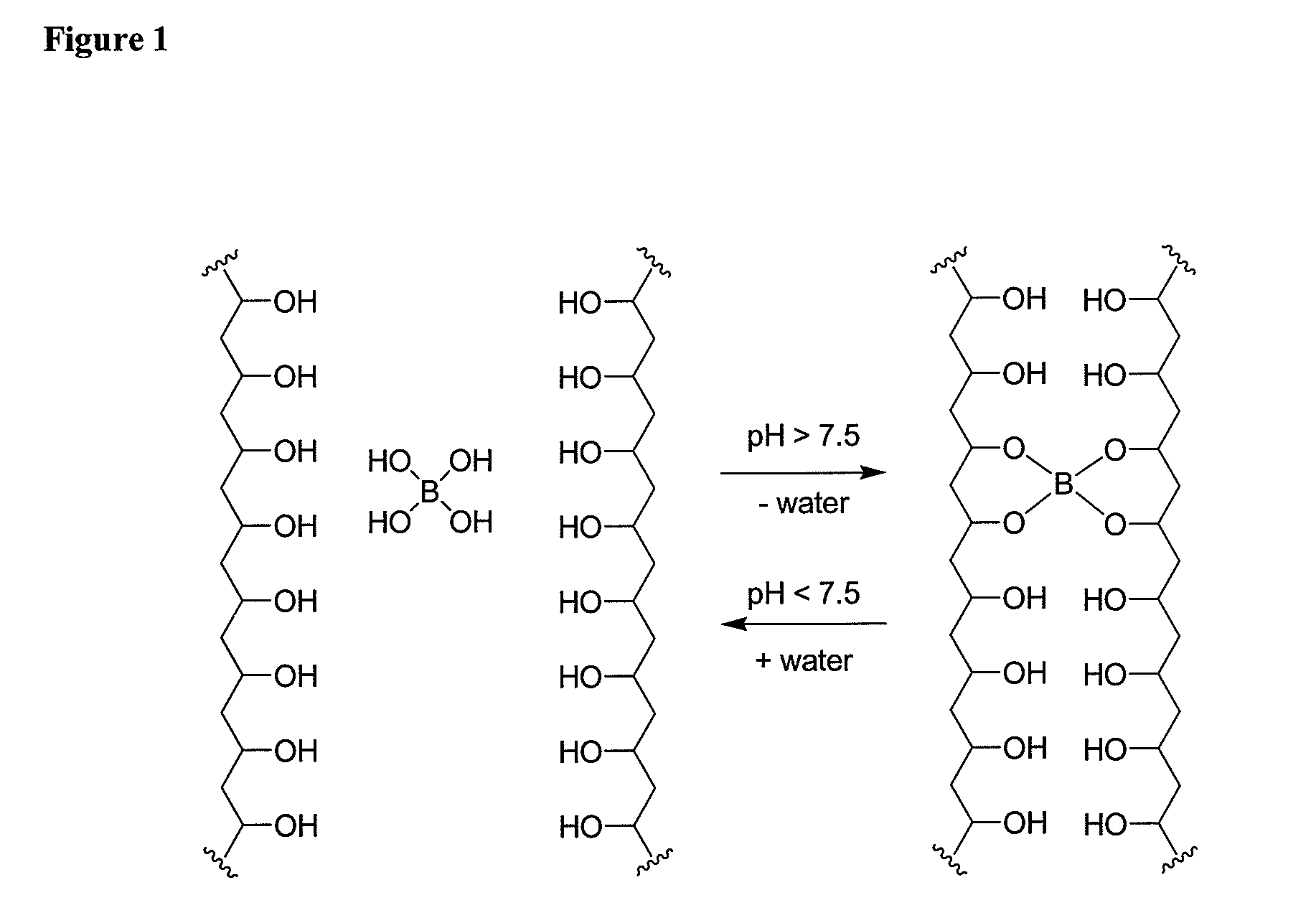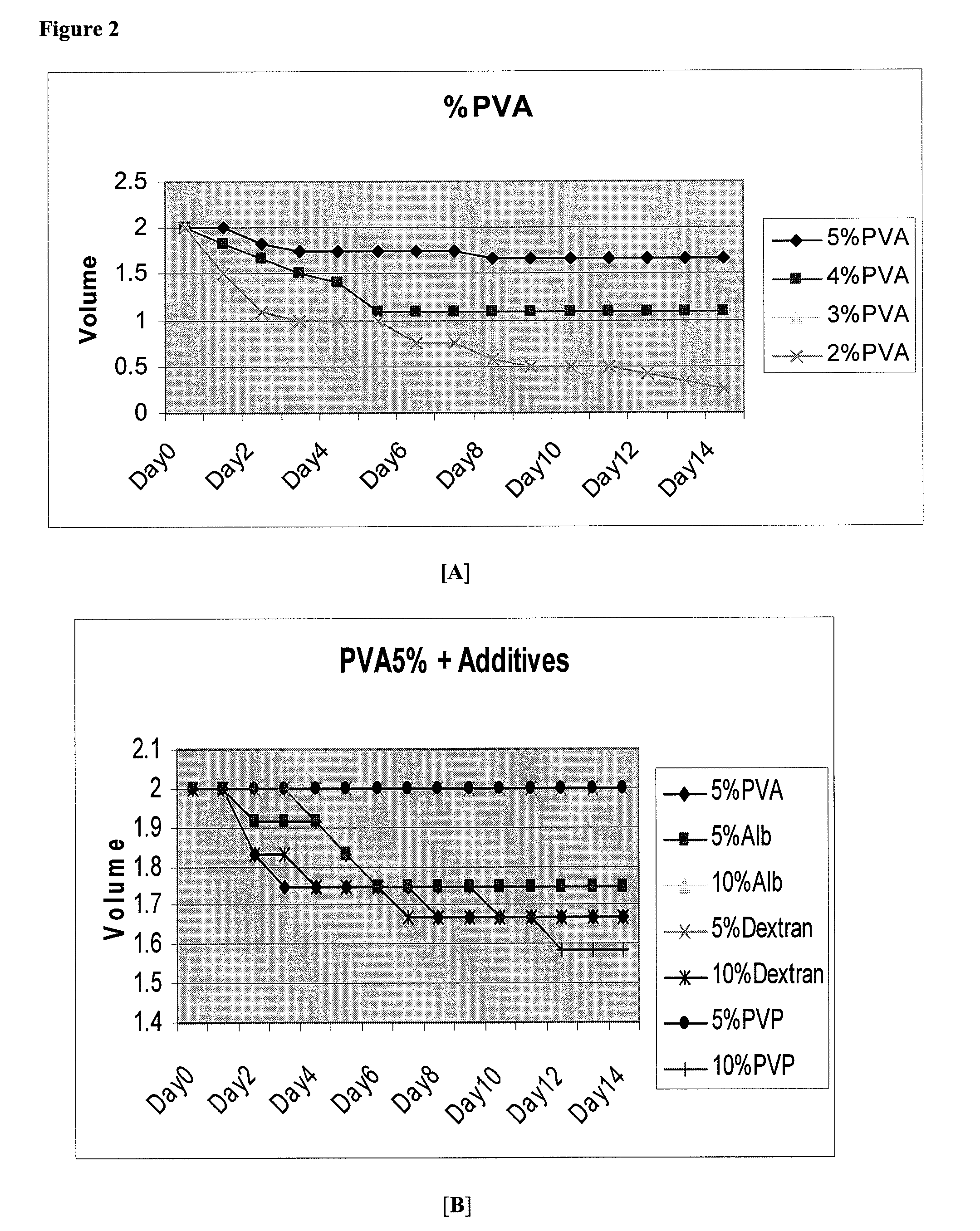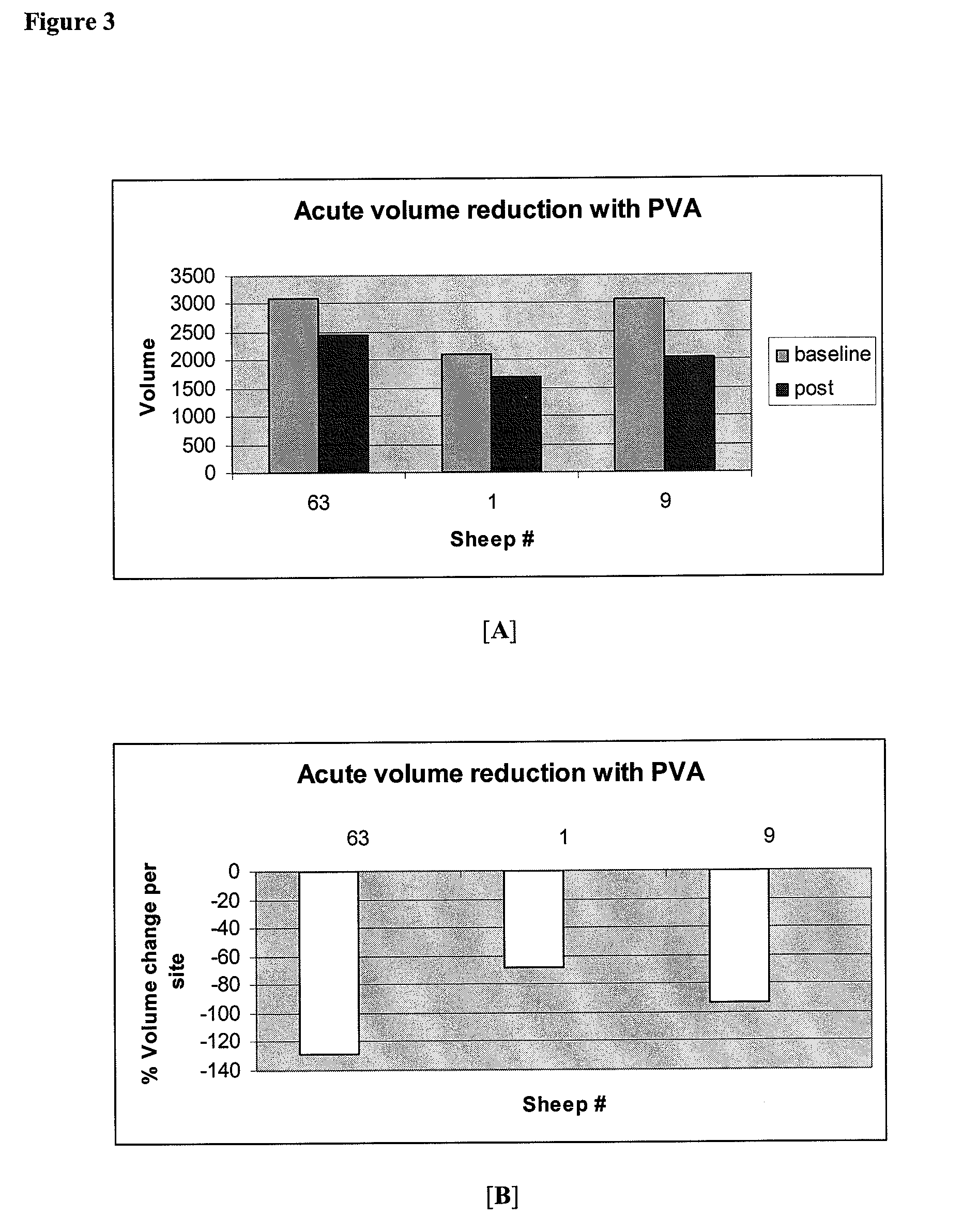Polymer systems for lung volume reduction therapy
a technology of polymer systems and lung volume, applied in the field of polymer systems for lung volume reduction therapy, can solve the problems of limited respiratory reserve and functional capacity unable to meet the needs of patients with emphysema, and the progress of unrelenting progress, so as to achieve the effect of reducing lung volum
- Summary
- Abstract
- Description
- Claims
- Application Information
AI Technical Summary
Benefits of technology
Problems solved by technology
Method used
Image
Examples
example 1
[0419]The gelation of polyvinyl alcohol (PVA) with sodium tetraborate was investigated. A graphical depiction of this is shown in FIG. 1. Screening experiments were performed with 98-99% hydrolyzed PVA with a molecular weight ranging of 85,000 to 146,000. The initial concentration of PVA was 6% and the borate concentration was set at 100 mM for these experiments and the pH adjusted to 9 with HCl. The ratio between the two solutions was set at 9:1 (PVA:borate). The two solutions were injected through a dual lumen catheter and hydrogels were created instantaneously. The resulting hydrogels were firm and elastic. The resulting hydrogels were firm, elastic and adherent compared to fibrin hydrogels.
example 2
[0420]A range of pH values were investigated for the borate solution as shown in Table 1 below. Experimental conditions were 6% PVA (99% hydrolyzed; molecular weight of 85,000 to 146,000), 100 mM borate, dual lumen catheter, with a 9:1 ratio of PVA to borate. Over the pH range from 8.5 to 9.5, all gels polymerized rapidly and all were firm, elastic and adherent.
[0421]
TABLE 1pH Influence on Gel Consistency.pH ValueGel Consistency9.5firm elastic gel9.25firm elastic gel9firm elastic gel8.75firm elastic gel8.5firm elastic gel
example 3
[0422]The pH was set at 9 for further experiments, and the influence of PVA concentration was investigated. The results are shown in Table 2 below. Experimental conditions were PVA (99% hydrolyzed; molecular weight of 85,000 to 146,000), 100 mM borate, pH 9, dual lumen catheter, with a 9:1 ratio of PVA to borate. At concentrations of PVA below about 4%, polymer content was inadequate to produce an intact hydrogel.
[0423]
TABLE 2PVA Concentration Influence on Gel Consistency.PVA (99%)ConcentrationGel Consistency6%firm elastic gel4%soft elastic gel2%slime
PUM
| Property | Measurement | Unit |
|---|---|---|
| molecular weight | aaaaa | aaaaa |
| molecular weight | aaaaa | aaaaa |
| w/w | aaaaa | aaaaa |
Abstract
Description
Claims
Application Information
 Login to View More
Login to View More - R&D
- Intellectual Property
- Life Sciences
- Materials
- Tech Scout
- Unparalleled Data Quality
- Higher Quality Content
- 60% Fewer Hallucinations
Browse by: Latest US Patents, China's latest patents, Technical Efficacy Thesaurus, Application Domain, Technology Topic, Popular Technical Reports.
© 2025 PatSnap. All rights reserved.Legal|Privacy policy|Modern Slavery Act Transparency Statement|Sitemap|About US| Contact US: help@patsnap.com



